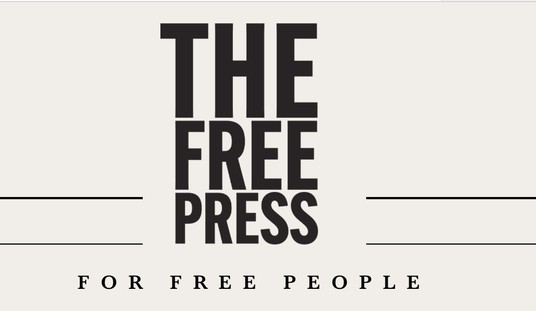If this study is correct — if — then there’s no such thing yet as a COVID-19 test that’s very fast and highly accurate.
And given how close infected people keep getting to the president, a test that’s quick and reliable is of the utmost importance.
Until we have one, he and his staff should be sticklers about masks and social distancing. They’re headed in that direction, thankfully.
The study looked at Abbott Laboratories’ ID Now molecular COVID-19 rapid test, which Trump hailed as a “whole new ballgame” at a March 30 news briefing because it boasted of delivering positive results in as little as five minutes. But the NYU researchers concluded that when testing swabs were stored before use in a stabilizing solution, the Abbott test missed at least one-third of positive results that were found using a different, more time-consuming procedure, the Cepheid Xpert Xpress SARS-CoV-2 test. Last month, responding to concerns about false negative results, Abbott changed its protocol to recommend using dry nasal swabs, rather than storing them in a solution that could dilute the samples.
But the researchers concluded that actually increased the rate of false negatives to 48 percent.
Abbott’s ID Now system is the one in use at the White House because it delivers results so quickly. Staffers can be tested shortly before meeting with Trump and know if they’re positive or not; just within the past week, Air Force Gen. Joseph Lengyel tested positive at the White House and was prevented from attending a meeting with him. Problem, though: Lengyel later tested negative twice, evidence that the White House machines aren’t perfect. False positives are one thing, though. False negatives are much more alarming, since that means infected people are being cleared to meet with the president in the mistaken belief that they’re not infected.
And false negatives are what the study got from the Abbott machines. It may be sheer dumb luck that neither Trump nor Pence has gotten sick yet.
Abbott disputes the results, insisting that false negatives from their tests reported elsewhere are running at .02 percent. They also question whether the NYU researchers were operating their machine correctly. Could be, but questions have been raised about the accuracy of their insta-tests for awhile:
Before a Senate committee last week, National Institutes of Health director Francis Collins testified that the rapid Abbott test had a 15 percent false negative rate, an apparent reference to unpublished data from the Cleveland Clinic.
“If you’re in a circumstance where you really don’t want to miss a diagnosis of somebody who’s already carrying the virus, you’d like to have something that has a higher sensitivity than that,” Collins said.
The Abbott rapid test missed about 25 percent of positives compared with a slower Abbott test, according to a study published April 23 in the Journal of Clinical Microbiology.
The White House is very much an environment “where you really don’t want to miss a diagnosis of somebody who’s already carrying the virus.” If the tests were erring on the side of false positives, that would be fine since people who test positive can always be kept away from others until more reliable tests clear them, as happened with Lengyel. But false negatives are a disaster in the making.
But if the White House doesn’t use the Abbott tests, what are they supposed to use? The new antigen test being developed by Quidel is a potential breakthrough, as it’s about as fast as the Abbott test and cheaper. But antigen tests also have higher rates of false negatives than the traditional PCR test performed in a lab. NBC estimates that they’ll detect 80 percent of infections, which would be a major improvement over the Abbott test if the NYU study is right but not the sort of gamble you’d want to take with the president’s life.
How about the brand spanking new saliva test instead? Not only does that bypass those god-awful foot-long swabs, it’s reportedly as accurate as a lab test.
To test for accuracy and win over the FDA, Rutgers compared the saliva test against the state-of-the-art nasopharyngeal swab in 60 patients in an effort to find early infection. Each patient was tested twice, once with each approach. The results were identical, Brooks said.
The Yale School of Public Health conducted its own study of 44 inpatients and 98 health-care workers and found that saliva samples taken from just inside the mouth provided greater detection and consistency than the nasal swab approach. The study also concluded there was less variability in results with the self-sample collection of saliva.
The saliva test may be more accurate than the lab test, as it detected traces of the virus in the mouths of two people participating in the Yale study who tested negative when they were swabbed. The problem for now is speed. Rutgers’s saliva test is designed to be used at home and then mailed out to a lab, with results in 48 hours. That’s too long to be useful to the White House — although a different saliva test is in the works in Connecticut that could potentially make results available within a half-hour, a la a pregnancy test. That’s what Trump and his team need. Until it’s available, maybe some sort of on-site testing could be set up to rapidly process results from the Rutgers test. Scott Gottlieb imagines it becoming a daily exercise: “Consider a model where employees would spit in tubes and then the samples would be pooled together in groups of 50 or even 100 and tested overnight to see if anyone has coronavirus. If a pooled sample gets a hit, the workers could be individually screened using PCR.”
In the meantime, basic common sense is to isolate Trump and Pence to whatever extent possible. Designate a few trusted advisors, like Mark Meadows, to act as go-betweens with the rest of the staff and test them daily or twice daily. Do everything on video chat that can be plausibly done on video chat.







Join the conversation as a VIP Member